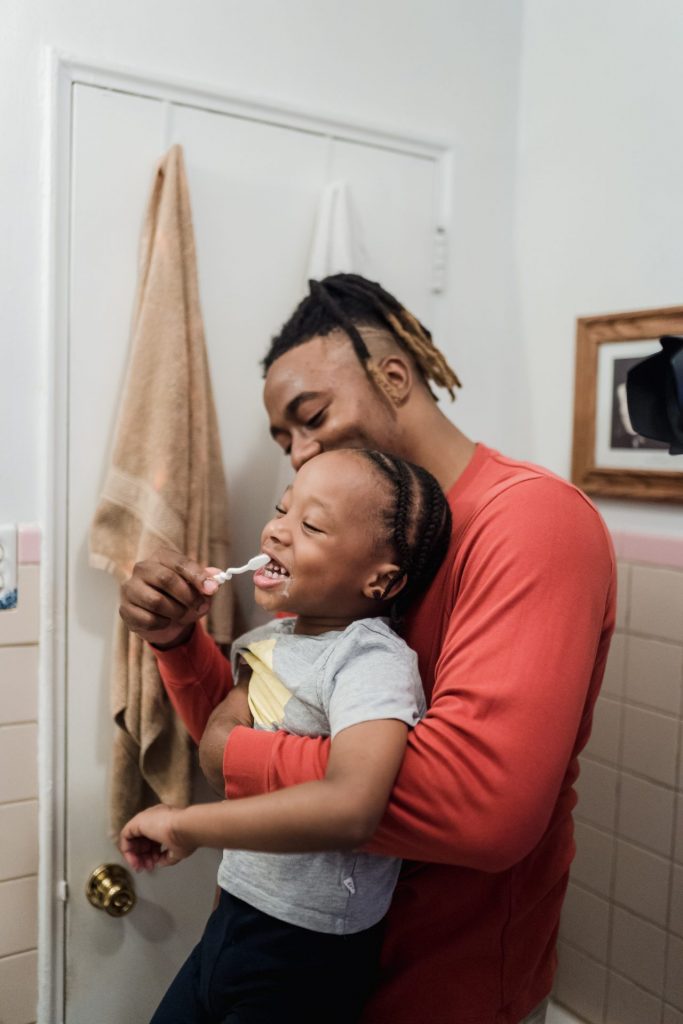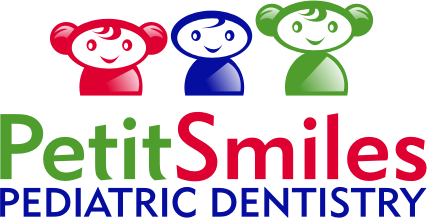
Techniques for Brushing Baby and Children’s Teeth
Introduction
Oral hygiene is crucial from the earliest stages of life, and teaching proper teeth brushing techniques to babies and children sets the foundation for a lifetime of healthy dental habits. Establishing good oral hygiene practices early on can prevent tooth decay, cavities, and other dental issues. In this article from Petit Smiles, we will explore effective techniques for brushing baby and children’s teeth, taking into consideration different age groups and developmental stages. Remember to follow us on Instagram for more related information.
1. Starting Early: Baby’s First Teeth
As soon as a baby’s first tooth emerges, usually around 6 months of age, it’s time to begin oral hygiene practices. At this stage, a soft, damp cloth or infant toothbrush can be used to gently clean the tooth and gums. Ensure the cloth or toothbrush is clean and the baby is in a comfortable and supported position, perhaps laying down or in your lap. As teeth continue to emerge, slowly introduce a tiny amount of fluoride-free toothpaste on the brush.
2. Toddlerhood: Learning Through Imitation
Between the ages of 1 to 3, toddlers are eager to imitate adult behaviors. Use this curiosity to make teeth brushing a fun and interactive activity. Allow them to hold the toothbrush and practice brushing their own teeth under your supervision. However, it’s important for parents or caregivers to follow up and ensure thorough cleaning. Use a pea-sized amount of fluoride toothpaste and brush in gentle, circular motions on all surfaces of the teeth.
3. Preschoolers: Making Brushing a Routine
Between the ages of 3 to 6, children can start brushing their teeth more independently, but they still need guidance to ensure proper technique. Encourage them to brush for at least two minutes, which can be made enjoyable by using a sand timer or playing a favorite song. Supervise their brushing to make sure they are reaching all areas of the mouth, including the back molars which are often neglected.
4. Elementary Age: Emphasizing Technique
Children aged 6 to 12 can begin to refine their brushing technique. Teach them to hold the toothbrush at a 45-degree angle to the gums and use short back-and-forth strokes for effective cleaning. Introduce them to flossing as well, as this age group is more likely to have teeth in close contact. Make sure they understand the importance of not only brushing the teeth but also the tongue and roof of the mouth to remove bacteria and freshen breath.
5. Teenagers: Sustaining Healthy Habits
Teenagers are capable of independent oral care but might need reminders due to busy schedules and lifestyle changes. Reinforce the importance of regular brushing, flossing, and using mouthwash to maintain healthy teeth and gums. Emphasize the impact of diet on oral health, encouraging them to limit sugary and acidic foods and beverages that can contribute to cavities and enamel erosion.
6. Special Considerations: Children with Special Needs
Children with special needs may require modified brushing techniques tailored to their abilities and comfort levels. Consult with a pediatric dentist or dental professional to determine the best approach. It’s important to establish a routine that suits the child’s unique needs while still prioritizing their oral health.

7. Leading by Example: Role of Parents and Caregivers
Children learn by observing, so it’s essential for parents and caregivers to demonstrate good oral hygiene practices. Brush your own teeth alongside your child to show them that teeth brushing is a shared activity. Use positive reinforcement, praise, and rewards to motivate and encourage children to brush regularly.
| Age Group | Technique | Tips and Guidelines |
|---|---|---|
| Baby (6 months+) | Gently clean with a soft, damp cloth or infant brush. | Clean after feeding and before bedtime. |
| Introduce fluoride-free toothpaste as teeth emerge. | Use a small smear of toothpaste. | |
| Toddler (1-3) | Let them practice brushing with supervision. | Use a pea-sized amount of fluoride toothpaste. |
| Encourage imitation and make it fun. | Brush twice a day for two minutes. | |
| Preschooler (3-6) | Guide brushing to ensure all areas are cleaned. | Use timers or songs for brushing duration. |
| Teach them to spit out toothpaste. | Supervise to ensure proper technique. | |
| Elementary (6-12) | Emphasize technique: 45-degree angle, short strokes. | Introduce flossing and mouthwash. |
| Educate about brushing tongue and roof of mouth. | Limit sugary and acidic foods. | |
| Teenagers (13+) | Encourage independence in oral care. | Emphasize consistent oral hygiene routine. |
| Remind them of proper technique and frequency. | Promote a balanced diet for oral health. | |
| Special Needs | Consult a dental professional for guidance. | Modify techniques based on individual capabilities. |
| Adapt techniques to suit unique needs. | Prioritize oral health with tailored approaches. | |
| Parents/Caregivers | Demonstrate proper brushing techniques. | Brush together to set a positive example. |
| Use positive reinforcement and rewards. | Create a supportive and motivating environment. |
Remember, individual children may vary, and it’s essential to adjust techniques based on their comfort, developmental stage, and any specific dental recommendations from a pediatric dentist. Please, feel free to contact us to get personalized information from any of our Pediatric Dentists.
Conclusion
Proper oral hygiene practices in childhood lay the groundwork for a lifetime of healthy teeth and gums. Tailoring brushing techniques to different age groups and developmental stages ensures that children learn effective habits from the very beginning. By starting early, making brushing fun, emphasizing proper technique, and leading by example, parents and caregivers can contribute to their children’s overall well-being by promoting optimal oral health. Remember, a healthy smile starts with proper brushing habits.
If you have any questions, comments, requests or suggestions, we invite you to contact us anytime at Petit Smiles in Coral Gables and Doral, FL.
Contents
- Introduction
- 1. Starting Early: Baby’s First Teeth
- 2. Toddlerhood: Learning Through Imitation
- 3. Preschoolers: Making Brushing a Routine
- 4. Elementary Age: Emphasizing Technique
- 5. Teenagers: Sustaining Healthy Habits
- 6. Special Considerations: Children with Special Needs
- 7. Leading by Example: Role of Parents and Caregivers
- Conclusion


